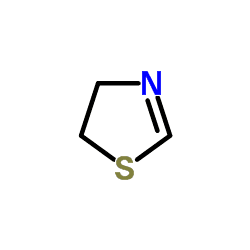Formula C3H5NS Pubchem 151424 | Appearance Colorless liquids | |
 | ||
Thiazoline meaning
Thiazolines (or dihydrothiazoles) are a group of isomeric heterocyclic compound containing both sulfur and nitrogen in the ring. Although unsubstituted thiazolines are rarely encountered themselves, their derivatives are more common and some are bioactive. For example, in a common post-translational modification, cysteine residues are converted into thiazolines.
Contents
- Thiazoline meaning
- Synthesis
- Related compounds
- Substituted thiazolines
- Thiazolines found in nature
- References
Synthesis
Thiazolines were first prepared by dialkylation of thioamides. More commonly, they are prepared from derivatives of 2-aminoethanethiol (cysteamine).
Related compounds
Three related classes of C3NS heterocycles are well studied, 1,3-thiazoles (parent: C3H3NS), 1,3-thiazolines (parent: C3H5NS), and 1,3-thiazolidines (parent: C3H7NS). The naming is analogous to the C3N2 heterocycles, imidazoles, imidazolines, and imidazolidines.
Substituted thiazolines
Many molecules contain thiazoline rings, one example being luciferin, the light-emitting molecule in fireflies. The amino acid cysteine is produced industrially from substituted thiazole.
Thiazolines found in nature
In a recent study, thiazolines were identified in nature through an analysis of sesame seed oil. The toasted sesame seed oil was extracted using a Solvent-Assisted Flavor Evaporation technique. The extract was analyzed by GC and GC-MS and a total of 87 components were identified. Amongst these components, 2-ethyl-4-methyl-3-thiazoline and 2-isopropyl-4-methyl-3-thiazoline were identified and confirmed as being present in a natural product for the first time.
